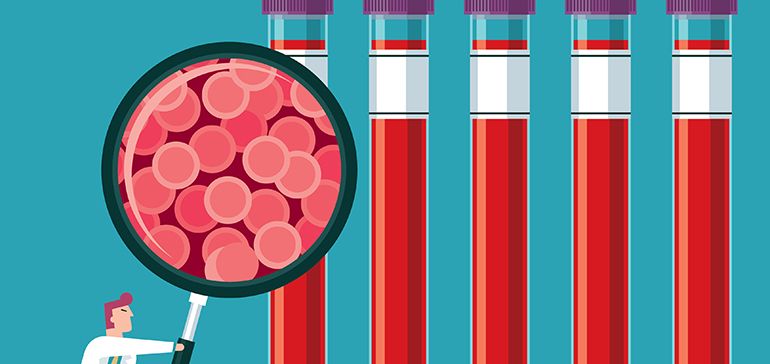
Ultrasensitive detection of MRD
According to the World Health Organization, cancer diagnoses remain a leading cause of death. However, scientific and medical communities have improved clinical outcomes for many people, transforming cancer patients into cancer survivors.
Part of this radical transition lies in an increased ability to detect even the smallest quantities of circulating cancer DNA, an indication of minimal residual disease (MRD). Measuring MRD can be a way to monitor disease progression, track clinical response to treatment and detect cancer relapse. In this article, we explore examples of how MRD testing is changing the clinic and the technology behind this transformation.
Optimizing MRD Testing in Therapeutic Workflows
MRD testing involves using molecular analysis to detect biomarkers associated with circulating tumor DNA (ctDNA) in the bloodstream via liquid biopsy. Clinicians only need a relatively small blood sample to conduct a liquid biopsy analysis, making the procedure relatively affordable and non-invasive. However, ctDNA is often in very low abundance despite being clinically relevant, requiring ultra-sensitive technology to obtain the molecular information they need.
Cancer analysis often begins with next-generation sequencing (NGS) to identify tumor-specific biomarkers and create targeted treatment plans based on a tumor’s genetic profile. Next, patients undergo treatments such as neoadjuvant therapy, resection, radiotherapy and chemotherapy.
During treatment, MRD testing can quantify the tumor response and direct clinical care. For patients in remission, liquid biopsies are essential to detect potential relapses early to maximize the treatment window if necessary. In both instances, MRD assays must quantify extremely low levels of biologically relevant ctDNA to effectively inform patient care and catch reemerging cancer.
Sensitivity and Specificity in MRD Detection
NGS is excellent for initial biomarker discovery and tumor profiling but can be prohibitively expensive and time-consuming to use for continuous monitoring. Quantitative PCR (qPCR) is technically simple and affordable but cannot reliably detect low levels of nucleic acids. Continuous MRD testing requires a unique combination of specificity, sensitivity and affordability per run which is best achieved by Droplet Digital™ PCR (ddPCR™) technology.
ddPCR assays provide absolute quantification and unparalleled precision compared to other relevant technology platforms. Samples are partitioned into 20,000 discrete droplets, which on average contain just a single copy of donor DNA. This partitioning allows for individual PCR reactions to occur within each droplet, removing the need for standard curves and increasing the assay’s precision, accuracy and sensitivity.
Ultrasensitive MRD Detection in the Clinic
Malignant hematological cells naturally circulate in the bloodstream and, therefore, an ideal candidate for liquid biopsy testing. The LAST study is an excellent example of how ddPCR technology empowers enhanced MRD detection in liquid tumors. The authors aimed to determine if patients could end a regimen of tyrosine kinase inhibitors (TKIs)—which can have side effects that reduce quality of life—without experiencing relapse. Ultrasensitive MRD detection powered by ddPCR technology determined that a subset of patients could successfully stop treatment with a low risk of relapse.
Beyond liquid tumors, the high precision and sensitive nature of ddPCR assays detect ctDNA as a biomarker in solid tumors such as lung adenocarcinoma and colon cancer. Across these studies, we see that clinically relevant MRD can be present at extremely low levels and therefore requires the unparalleled precision and low-level detection capabilities of ddPCR technology.
From informing therapeutic decisions to identifying relapses, liquid biopsies help cancer patients through their disease journey and during recovery. However, high sensitivity is required to detect low-level MRD. While NGS can be used for serial monitoring, this technology has a high cost-per-run and a long, complex workflow. In contrast, ddPCR assays are fast, ultrasensitive and cost-effective per run—making it the premier technology for ongoing MRD surveillance.
Learn more about the applications of ddPCR technology in MRD testing and beyond.